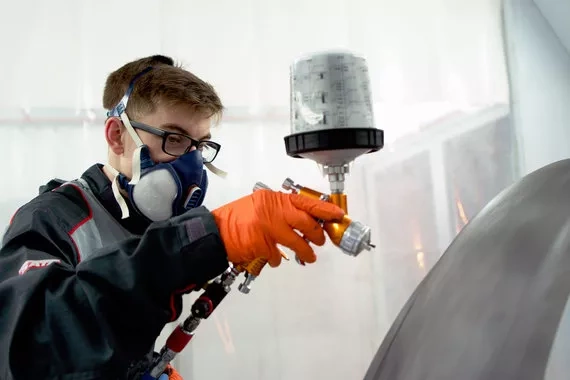
Find your nearest IMI Centre who offers this product
Documentation
Start Date: Tue, 30/04/2024
End Point Assessment: AS-RET-EPA-V1.2
The Apprenticeship Standard and Assessment Plan can be found here.
Overview of the role:
Written by employers, with input from sector specialists, the Retailer Level 2 Apprenticeship Standard V1.2 is suitable for individuals looking to further their knowledge, skills, and experience working in the automotive retail sector.
Apprentices will gain experience in helping customers to buy products or services. This includes providing information and advice regarding stock, products, the different ways in which customers can shop, and various payment methods.
Designed with different learning styles in mind, the IMI’s solution ensures apprentices are fully engaged and prepared for their End Point Assessment (EPA). This standard provides an ideal stepping-stone into specialist, team leading, supervisory or first line management roles within retail and higher level training and apprenticeships.
Role/Occupation:
Retailers create an accessible, well-presented environment where customers are encouraged to buy products or services. They work to meet or exceed customer expectations. Retailers will contribute towards the commerciality of the business by achieving targets, including sales and customer service, and following stock control in-line with business objectives.
Typical job titles include: counter assistant, customer team member, general assistant, retail assistant, retail sales advisor, retailer, sales assistant.
Duration: Typically, 14 months (a minimum of 12 months).
The typical duration to gateway is 14 months, depending on experience.
Occupation summary
“Helping customers buy products or services from retail organisations such as department stores, garden centres, high street chains, supermarkets and online and mail order businesses”.
This occupation is found in organisations of all sizes within the retail and tourism sector including food, fashion, furniture, and automotive. Retail outlets range from traditional high street shops to larger organisations such as supermarkets and department stores. It is found in multi-national employers, small independent employers, and employers who trade through a variety of channels such as face-to-face, telephone, online and mail order retail.
The broad purpose of the occupation is to advise on and sell products and services in a customer-centric retail environment. This includes creating an accessible and well-presented environment. Retailers provide information and advice to customers regarding stock, products, different ways customers can shop and various payment methods.
Retailers work flexible hours and shifts such as evenings, nights, and weekends. Face to face or instore roles may involve moving and replenishing stock, using relevant equipment such as pallet truck, steps, and trolley.
In their daily work, an employee in this occupation interacts with internal stakeholders such as members of their own team, other departments, and senior management. They also interact with external stakeholders such as customers, delivery drivers and compliance officers.
An employee in this occupation will be responsible for maintaining business standards; ensuring stock is presented, replenished and available for the customer to purchase. Retailers will contribute towards the commerciality of the business by achieving targets, including sales and customer service, and following stock control in line with business objectives. They need to know the services they are selling to be able to build customer confidence in their business.
Retailers work to meet or exceed customer expectations and experience and will identify specific needs of individual customers. They will respond to customer enquiries complying with both business and legal requirements. They will have a knowledge of sustainability in relation to products such as dealing with excess packaging, waste and product sourcing.
Retailers who work within smaller retail sites may have additional responsibilities such as where the stock is placed in store and planning the order of tasks. Retailers may be responsible for supporting the development of new colleagues through buddying or 1 to 1 coaching. Retailers typically work as part of a wider team, depending on the size of the organisation, reporting to a line manager or small shop owner.
Entry Requirements
English and Maths at Level 1 (or equivalent) is required to be held prior to the EPA. The IMI provides solutions for any apprentice who does not have a Level 1 (or equivalent) in English or Maths before starting, to achieve this before completion of the apprenticeship.
Organisations will set their own entry requirements. During the selection process it is recommended that the apprentice demonstrates the following qualities:
End-Point Assessment Gateway (Mandatory)
Assessment Overview
The EPA takes place at the end of the apprentice’s learning and development, after the apprentice has met the EPA Gateway requirements. The EPA should be completed within an EPA period lasting typically 3 months.
The EPA has two assessment methods, which can be taken in any order:
Each assessment method is graded: Fail/Pass/Distinction.
The apprenticeship includes Fail, Pass, and Distinction grades which are awarded at the End Point Assessment. The result from each assessment method is combined to decide the overall apprenticeship grade.